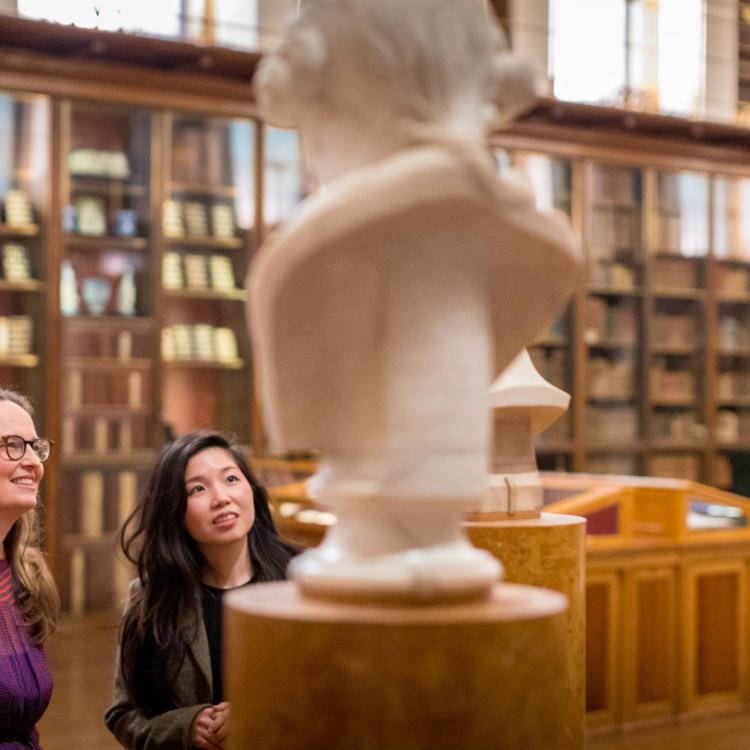
Advisory Council
Members of the Advisory Council in the Enlightenment gallery (Room 1).
View the Enlightenment galleryAdvisory Council minutes
British Museum Friends Advisory Council
The British Museum Friends (originally the British Museum Society) was founded in 1969 with the aim of supporting the Museum in its work. The British Museum Friends pay an annual subscription in support of the Museum's work and in return they receive a range of benefits.
Since 2012 the British Museum Friends has been governed by the Trustees of the British Museum (acting as the Trustees of the British Museum Friends) and assisted by an advisory council ('the Council').
Current Members of the Advisory Council
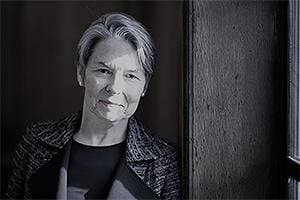
I've spent my career in universities, researching, writing, teaching and indulging in more than usual amounts of strategic governance. I began first (and very briefly) as a scientist, and then continued as a lawyer. Because of that path, I became a Trustee of the Museum as the British Academy's nominee to the Board, and now have the pleasure of chairing the Friends Advisory Council.
Most Trustees have stories about when they first came to the Museum as five or seven year olds, and how it left them with a lifelong fascination for the place. It took me far, far longer to get here. But along the way I too caught that fascination with material culture and what it can teach us about ourselves and about ancient and modern societies around the world. I was very young when my parents moved from England to Africa, and later to Australia; and then my husband and I took our own family to Russia before moving to London. In its own way, all this travel was marvellous preparation for engaging with the marvels of the Museum.
But it did mean that I first came to the Museum in the mid-1990s – pre-Great Court – trailing my own children, four of them, all in primary school. You can guess what we concentrated on: the mummies, Roman Britain, the Sutton Hoo helmet, Lindow Man… and, because I insisted, the Lewis chessmen (a hit) and the Rosetta stone (I confess the magic was completely lost on them).
These days I love the fact that it's possible to pop into the Museum for half an hour, or stay for a morning, exploring different civilisations, marvelling at how clever they were and how artistic their endeavours; noting how different – or how surprisingly similar – certain developments were across different continents; and registering just how old our 'modern' problems are, whether it is the trials of climate or war, food shortages or inadequate shelter, and the joys and tribulations of living together or setting out to explore further afield.
My fellow Council members have all selected a favourite object. I find that impossible. For me, it's a place: the round Reading Room. It's a wonderful refuge; it exudes calm and captures awe in a single room and provides space to realise that if you see different things, then you see things differently. And the Museum must be the best place in the world for that.
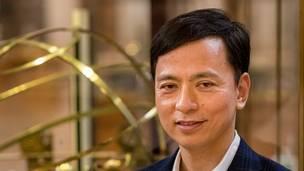
I'm a lawyer by profession and work for an international bank. While based in Tokyo, I'm a frequent visitor to the UK professionally and personally. My link with the country started in 1993, when I arrived in the UK to read law as a graduate student. The UK has since continued to be an integral part of my interests and curiosity.
The British Museum is at the centre of many fond memories that I have had of the UK over the years. During many visits to the Museum, I saw and felt a history of the world walking through the Rooms with numerous objects on display from all over the world. While I was a graduate student, I was admitted to the Round Reading Room and felt privileged to be a reader under the most beautiful dome. I also sometimes dropped in at the Museum just to enjoy the building with its classical architectural glory. It was my desire to return something to this great institution that prompted me to become a Member.
If I'm asked to name just one among my favourites at the Museum, it would be the Franks Casket – the small whale-bone box made in Anglo-Saxon times. As well as its intricate carvings featuring Roman, Christian and Germanic legends, I am fascinated with the mysterious way in which the box had survived for more than one thousand years until its eventual discovery in 19th-century France.
However great its collections may be, a museum can't be great on its own. Rather, it becomes great when people experience and regard it as such. The Advisory Council plays a vital role in this regard, acting as a bridge between the British Museum and its friends. It's my privilege to be part of the Council and to serve the Membership in support of this world-class Museum.
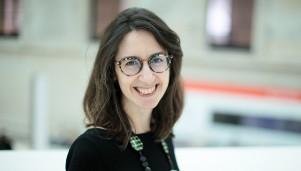
I am a lawyer by background and I work in banking supervision. I have been lucky enough to have had the opportunity to study, work and live in several countries. From my native Italy and other European countries to the US, China and Hong Kong, and London where I currently live.
Being very passionate about archaeology and the history of humanity, the British Museum was among the very first landmarks I visited when I moved to London. It was love at first sight! It was therefore very natural that I felt strongly motivated to become a Member as soon as I learnt about the scheme.
Since then, I have been to countless exhibitions (and to each more than once!), wandered in the Museum's galleries (alone and with family and friends) and enjoyed the comforts of the Members' Room for more weekends than I dare to remember. From the very beginning, and throughout the years, the British Museum has been a second home to me. I am therefore truly honoured and extremely grateful for the opportunity to contribute to its mission as a Member of the British Museum Friends Advisory Council.
It is very difficult to identify one favourite object in the Museum's collection. However, if I really have to choose one I would definitely say the two-winged, human-headed lions that flanked an entrance to the royal palace of King Ashurnasirpal II in Nimrud. Their half-human, half-animal character symbolises the essential connection between humankind and nature which is indispensable to harmony. They're colossal and yet their smile is not intimidating but quite serene, embodying a 'sweet' strength which is not fuelled by aggressiveness but pervaded by kindness. Whenever I look at them, I am filled with a feeling of calmness and protection and I am reminded that as human beings we are all members of a whole which transcends time.
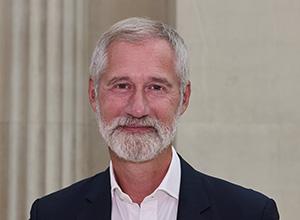
I have been a regular visitor to the British Museum since adolescence, especially to view the Assyrian, Egyptian, Greek and Roman galleries, with which as a half-Greek I have always felt a strong connection. In my time as a partner of a City law firm I was fortunate enough to travel a great deal and lived for five years in Germany, as a result of which I was often struck by what unites us rather than divides us as peoples, and really came to appreciate how extraordinary the Museum collection is.
When our children were growing up we used to take them to swimming lessons in the London University pool nearby, which we would often follow with a quick visit to a few galleries in the Museum. This was a real privilege for us all: the easy access and huge variety of objects can lead to a lifetime of engagement with world culture. In a world of so much distraction and conflict, introducing more people to the wonders of our common cultural heritage is a more important force for good than ever.
Of all the magnificent items in the collection, the one that I return to most often is the Horse of Selene from the East Pediment of the Parthenon. It is a marvellous mix of fiery exertion from pulling the chariot of the moon goddess across the sky, and of cheeky playfulness, its nose peeking out of the pediment as the chariot sinks into the sea. However, works of art inspire not just through their stylistic qualities but also through the images they evoke: for me, it transports me to its original viewpoint high over Athens on the temple where it witnessed two millennia of immense change, and it conjures up the August full moon (Πανσέληνος – Panselenos) over the sea, which to this day is a time of celebration and joy in Greece.
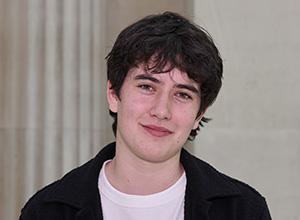
From my first solo visit, I've felt a connection to the calm solace of the British Museum and the collections housed within. At the time, I was studying A-level Classical Civilisation and searching for a place that would allow me to immerse myself in a deeper learning experience, to travel back in time and history. There are many museums in the world, but there is nowhere quite like the British Museum. It draws you in from the moment you step into its atrium, a spectacular two-acre indoor courtyard under a dome of never-ending glass – a perfect blend of old and new.
By the time I had finished sixth form, British Museum exhibitions (The World of Stonehenge was a standout for me!) had become a regular fixture of visits to London and a fun place to take friends and family. The allure of Membership became too great to resist. I now work as the Chief Technology Officer of an EdTech Company and develop products that facilitate learning for millions of students from secondary school through to university. It is with this perspective, and as the youngest member of the council (joining at 19 years old), that I wish to share my enthusiasm and create value for new young members of the Museum.
One of my very favourite objects (out of the 80,000 on display today) is the Portland Vase. An amphora, thought to date back to the early first century AD. It is a stunning work of Roman cameo glass, contrasting translucent cobalt blue and finely carved opaque white figurines for dramatic effect. The vase, like the wider collections of the Museum, inspires scholarly debates that make history both eye-opening and tangible. But what does it represent? Was it political? A depiction of the tragic love affair between Mark Antony and Cleopatra and her seductive charms, watched over by Octavian with the threat of downfall looming in the form of the snake? Or mythological? The divine marriage of Peleus and Thetis with Dionysus' consort Ariadne flailing on the island of Naxos?
However, this amphora serves as more than a beautiful symbol of the Classical world. Its story of destruction and restoration speaks to the resilient spirit of the Museum. In 1845, a visitor smashed the Portland Vase into over 125 pieces – yet, within only five months it was fixed and back on display. Over the years the vase has been deconstructed and repaired multiple times to ever-increasing degrees of accuracy. The swiftness of and care taken with each restoration reflects my own experience of what makes the Museum so special today – highlighting the enduring expertise and passion of the conservators, curators, and staff.
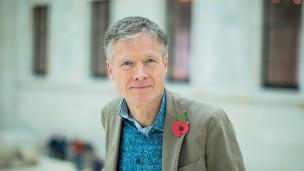
The British Museum is far more than a repository of fabulous objects from around the world, it is a source of beauty and spiritual refreshment. The building seems to symbolise its dual role – a classical facade like a giant box protecting a treasure trove of objects within. This gives way in the Great Court to a sunlit space full of people, full of joy and wonder. Many times, this has bucked me up on a damp and wet London day.
I first came to the Museum as a child for Tutankhamun and then the Jade Princess. I've kept coming back, for the collection, for the exhibitions and for a place to meet old friends and then there's a professional connection too...
I spent 26 years at the BBC working first in Arts and then News, across TV, radio and online. It was in an 'interactive' capacity that I worked closely on the partnership with the British Museum for Neil McGregor's defining series, The History of the World in 100 objects. Through the BBC's network of local radio stations, we helped create an online collection of people's favourite objects and their stories. A clear example of the power of object-led, storytelling to deepen understanding of history and culture, I came away with deep respect for the expertise of the Museum's curators and their passion for the extraordinary things they look after so well.
After the BBC I worked for the National Trust, variously as director of communications, media, content and partnerships. The National Trust is also a museum or rather museums. Its 300-plus mansions stuffed with objects ranging from the everyday to the extraordinarily rare.
A museum that sets out to be a museum of the world, for the world presents itself with huge challenges of reach and relevance. I hope I can help with that. This great institution needs to be reflective of modern Britain and through its collections shed beams of light on the world today. My favourite object does have contemporary relevance; The Tree of Life is in the Africa gallery. A black twisted sculpture made from iron in the shape of a tree. It is forbidding and dominates its space but it's actually a beacon of hope. The black iron pieces are broken up bits of guns and munitions, given up by fighters at the end of Mozambique's bitter civil war. Latter-day swords into ploughshares, guns into art. It makes you think.
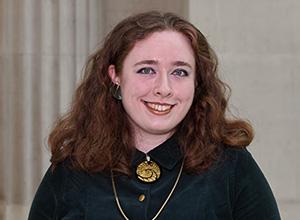
I am an art historian in training and, having just completed an undergraduate degree in History of Art at the Courtauld Institute, I am currently studying for an MA in medieval art with a specific focus on apocalyptic imagery. I also set up the Medieval Society as part of my Students' Union, through which I aim to engage my peers with medieval art and architecture outside lecture theatres. Alongside my studies, I am training in manuscript illumination and miniature painting which assists my understanding of the practical implications of medieval art, while deeply informing my artistic practice. My research has led me to the British Museum collection again and again, representing a constant source of inspiration. The interplay between method, material and meaning is something I'm especially interested in, and I believe viewing objects in person is the best way to experience them fully. I find my regular visits invaluable and they represent an important aspect of my university experience. I am actively engaged with the art world and issues facing museums and galleries at the moment, challenging myself to visit as many exhibitions and events as possible to broaden ideas. This enhances my life and experiences considerably, and I think it is important to draw other people of my generation into these settings.
From an early age I visited the British Museum with my parents, which helped inspire a keen interest in the Museum, and a specific fascination with the Assyrian and medieval galleries. The collection informed my thinking throughout my education and I became a Member as soon as I was old enough to. When I moved to London to begin my undergraduate degree, my proximity to the British Museum allowed me to wander in spontaneously and to visit exhibitions multiple times in order to gain as much from them as possible. It feels important to remain a Member because it makes exhibitions, and the wider collection, so much more accessible. The Museum's wide variety of Member events have also kept me highly engaged with the institution, providing activities which differ from my day-to-day existence while enhancing my education and understanding in invaluable ways.
While I love many objects in the Museum, my favourites are the Neo-Assyrian Lion Hunt reliefs of Ashurbanipal. I find their intricate details fascinating and always make time to visit them when I'm in the Museum. They are energetic, dynamic works encapsulating the power wielded by the king, however, closer examination of the depictions of lions reveals incredibly sensitively sculpted and closely observed creatures. The subtle pathos imbued within the lions' faces defines, for me, the complex dynamic between ancient humans and wild creatures which often involved fear and aggression, alongside a certain level of awe and respect. This subject formed the basis of an extended essay in my undergraduate degree and the multi-dimensional meanings of lions in Neo-Assyrian art continue to intrigue me.
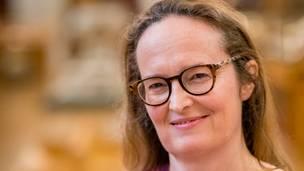
I am an environmental historian by training, with stints in public history and ecological anthropology. With my husband Paul Hains I founded Aeon, a digital magazine of ideas and culture, which covers philosophy, science, history, psychology and other fields, and I am the editorial director there. Our work shares the Museum's mission of communicating knowledge to the widest public audience in a spirit of humane and cosmopolitan inquiry. When I was 16 I visited London and the British Museum for the first time, struck by the difference between seeing objects in books, and encountering them, full of presence, in the 'flesh'. Since then I have spent many happy hours in the Museum, both when visiting London and during a time living in the city. As an Australian, with a great love of, and regular visits to the Museum, I hope to represent the international friends on the Council, in the spirit of former director Hartwig Fischer's vision of the Museum as being 'of the world, for the world'.
It's extremely difficult to choose a single object to embody the Museum in my mind, but for this purpose I'd like to nominate the beautiful, contemporary shovelnose shark mask from the Torres Strait artist Alick Tipoti, which can be seen in the Living and Dying gallery. The mask is rich in traditional symbolism, with its fish, frigate birds, human heads and the shark itself. When the shark is disturbed on the seafloor it takes off, creating a cloud of dust in the water, lit up by phosphorescence, which represents the creation of the Milky Way or Kaygasiw Usul. The mask has been used in contemporary dance, as performed by the artist at the Museum in 2015 to accompany the exhibition Indigenous Australia. Apart from its sheer beauty and delight in the natural world, the mask embodies something important about the Museum's collections and their living importance to ongoing cultural creativity. Tipoti's work was inspired by an exquisite, haunting shovelnose shark mask collected for the Museum in the 1880s, also from the Torres Strait. Tipoti has refashioned the iconography and materials of the original turtle-shell mask in contemporary form, demonstrating both the vitality of culture, and the service that a great, global Museum can provide to the keepers of culture as they renew and rethink the meaning of such deeply symbolic objects. Apart from its specific cultural significance, to me the mask is a symbol of the interdependent relationship between culture, nature and cosmos – an ecological ethic which makes this an especially charged object, as are so many other objects in the collections.
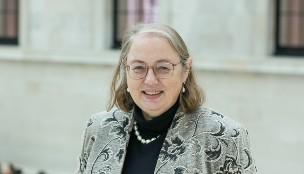
After lecturing in English Literature for thirty years I retired in 2022 and am now a professor emerita. When my mother came down to London as a student in the late 1950s she got a job in an antiquarian bookshop opposite the British Museum, so when we came up for the day she would often take me there (I particularly remember the Tutankhamun exhibition), and it became a place I felt at home. Now I plan trips to London around exhibitions and always leave time to see other things too, because however often I have looked at them before there always seems to be something new to notice.
If I had to choose one object it would be the Royal Gold Cup of St Agnes, for two reasons: it has a link to some important diplomatic negotiations in the reign of James I, and in E W Hornung's short story A Jubilee Present it is stolen from the Museum by Raffles, the amateur cracksman, who thinks it is the most beautiful thing he has ever seen (though in the end he posts it to Queen Victoria as a gift for her Diamond Jubilee because he can't think what else to do with it).
I have a particular fondness for fictional portrayals of the Museum, particularly in the work of Georgette Heyer, whose characters are invariably disappointed by it (which always reminds me how much it has developed even within my memory). I like written labels (and hope that there will be enough light to read them by), but I have appreciated some of the digital additions to recent exhibitions, especially the coloured panels in the Ashurbanipal show.
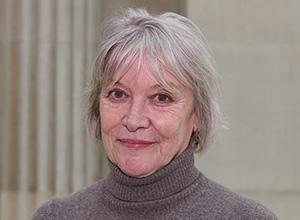
The British Museum was, naturally, a magnet for me when I was at university in London many years ago studying the Classical world. I was a regular visitor to the Greek and Roman galleries, occasionally dipping a toe into Egypt or Assyria. One day, however, a Highlights tour opened my eyes to what was on offer beyond the world of my beloved Greeks and Romans.
Since becoming a Member I have more than made up for my initial lack of curiosity. In truth the British Museum feels like my own private university, with a global curriculum to explore (and no exams!). Exhibitions, lectures, behind-the-scenes sessions, out-of-hours tours (the bliss of having the Museum virtually to yourself) – I've rediscovered the joy of learning from the best in class.
A couple of years ago I was thrilled to become a Volunteer, and now I get to show this amazing place to visitors from around the world. Sharing the British Museum's story – and those of the objects we visit – is a joy and privilege. It's especially rewarding to see how visitors respond. Cultural institutions around the world are grappling with some big challenges and questions, so finding moments of connection in these spaces is something to be treasured.
A favourite object? The thing most visitors want to see, apparently, is the Rosetta Stone (and it features on the Museum's best-selling postcard). My personal favourite changes frequently, but today I'm going to nominate the Rosetta Vase. Whereas our oldest object in the Museum is around two million years old the Rosetta Vase was made comparatively recently.
Moreover, it was created especially for the Museum. It's a fabulous pot which was made by, in my view one of Britain's finest, and most beloved artists, Sir Grayson Perry, for the 2011 British Museum exhibition he curated, entitled The Tomb of the Unknown Craftsman. Decorated with witty images inspired by objects in the Museum, it pays homage to the Museum as a modern-day secular place of pilgrimage where cultures and ideas meet. And it reminds us, sadly, that the makers of most of the objects on display are unknown. It always piques my interest and gets me thinking.
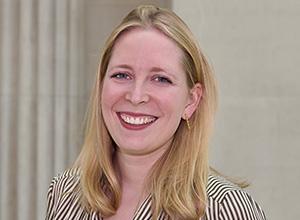
As a student of International Relations and War Studies; a current UK Civil Servant serving overseas; and someone who has been lucky enough to spend several years living in Africa, Europe and South America, I take pleasure learning about other cultures and understanding their past as much as their present. History can so often be a way to understand and appreciate those around us, and the British Museum has helped instil this in me from a young age.
I have been an avid devotee of the British Museum from when I attended my first Young Friends sleepover in the Egyptian galleries with my sister (something that inspired me to want to one day be an Egyptologist – a sadly still unfulfilled passion!). Since then, the Museum has seen me through each stage of my life, the turbulent as well as the happy.
In all of these moments, the British Museum has been an avenue for my imagination even with the most ordinary of objects. Who wore that bracelet? Who carved that stone? Who drank from that cup? By imagining the lives of those people, I take calming reassurance in remembering that life in many ways remains unchanged – we are all, and always have been, simply human. It is therefore predictably hard to single out just one favourite object that captures this for me! Choosing a recent example, though, I was particularly drawn to the Vindolanda tablets at the Legion exhibition. Not only are they incredible artefacts (as probably the first example of women's handwriting in Britain), but they resonate with something we still do today: inviting someone to a birthday party. The difference being that this party was nearly two thousand years ago!
For me, history is about empathising with the past: but it can also be many things to many people, and the Museum is a gateway for that. Becoming a member of the Advisory Council is an exciting opportunity to support the Museum in that effort, to contribute to a thriving and growing Membership experience, and to continue to enable the accessibility of history of everyone, for everyone.
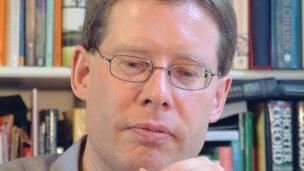
A fascination with Indian culture and history prompted me to join the British Museum Friends in the mid-1980s, while researching a biography of Satyajit Ray and an academic study of Rabindranath Tagore's modernist paintings. As an editor working at Macmillan Publishers, Granada Television and The Times Higher Education Supplement – and latterly as a freelance author and journalist – I went on to write more than 25 books on subjects ranging from the history of writing/scripts to the history of science/measurement. Many involve the collections of the Museum. I'm pleased to help the Friends explore, understand and publicise the collections
Writing is among history's greatest inventions – perhaps the greatest, since it made history possible. Without writing, there would be no permanent recording, no Rosetta Stone and no British Museum as we know it. The Museum has, of course, one of the world's great collections of inscriptions, of keen interest to Friends – as I've come to appreciate while recently lecturing to them on the 'lost' Indus civilisation, on the decipherment of Egyptian hieroglyphs and on the origins of writing, beginning perhaps in Ice Age caves.
Naturally, the Rosetta Stone holds a particular allure for me, as the author of two biographies of its chief decipherers: the British polymath Thomas Young The Last Man Who Knew Everything and the French Egyptologist Jean-François Champollion Cracking the Egyptian Code. But as my favourite object at the Museum, I'd probably choose one of the miniature Indus seals on display in the Sir Joseph Hotung Gallery. I've even used one as a sort of logo on my professional website. Exquisitely carved in steatite (soapstone) some four millennia ago, the seals depict animal, human and divine figures, including a puzzling 'unicorn', next to mysterious glyphs. Once seen, never forgotten. Indus archaeologist Mortimer Wheeler called them "little masterpieces of controlled realism, with a monumental strength in one sense out of all proportion to their size and in another entirely related to it". The first seal to appear in print, in 1875, is in the British Museum's collection. Yet even now, after more than a century of scholarship, the Indus glyphs remain the world's most tantalising undeciphered script, as described in my book, Lost Languages: The Enigma of the World's Undeciphered Scripts. Who knows? Perhaps in the future some young Friend, intrigued by the Indus seals, will help to take the decipherment further.
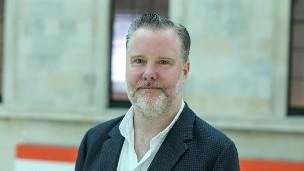
Immediately intrigued by a mummified cat seen on my first visit to the British Museum as a child, I became a regular visitor – and then a Member – when a music magazine I was working for ended up being based just up the road from Great Russell Street.
Having often smuggled in references to my love of history during my career as a music journalist and broadcaster – I even once worked on a radio show where we got Mary Beard to rate songs that mentioned 'ancient history' – it has been a relief for me (and, no doubt, my audience) now I can instead regularly immerse myself both in the Museum's collection and within the community of Members at lectures and other events. Indeed, it is a true honour to represent that lively, engaged and inquisitive group as a Member of the British Museum Friends Advisory Council.
Choosing a favourite item from the Museum's collection feels a little bit like picking your favourite song (it changes every day...), but I am often drawn to the bust of Trajan in the galleries on the first floor. Not only does it reflect a personal passion for Italy while also affording an expressive glimpse into the projection of Roman power, but the sculpture possesses a star-like swagger I recognise from conducting interviews during my NME days.
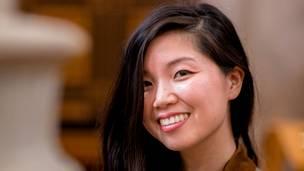
I'm a financial services lawyer, hobbyist creative blogger, occasional writer for various creative magazines and ultimately, an avid fan of the British Museum. I can still remember my first experience at the British Museum as a school child, learning about the incredible Rosetta Stone, which equipped us with the tools to translate hieroglyphics and understand more about the majesty and magic of ancient Egypt.
The fact that the Museum was free, and remains free, is one of the most wonderful things about London. Some of humanity's greatest creations are accessible to all – and the support of the Members is crucial to ensuring this remains the case. My motivation for becoming a Member of the Museum (aside from the exciting exclusive events, entry to the fascinating seasonal exhibits and the ability to find solace in the Members' Room): the chance to contribute to a place that inspired me and captivated my imagination (so that others can feel the same way!). I'm therefore honoured and humbled to be part of the Council.
My favourite piece in the British Museum is probably the Crouching Venus – a divine, beautiful and elegant work, I have sketched it many times! It was one of the things that sparked my endless love of ancient Greece and Roman mythology.
Contact the Membership Office
Email: [email protected]
Phone: +44 (0)20 7323 8195
Opening times
Monday–Friday: 10.00–16.00
Closed: weekends and bank holidays
Visit the Membership FAQs for the latest information.
